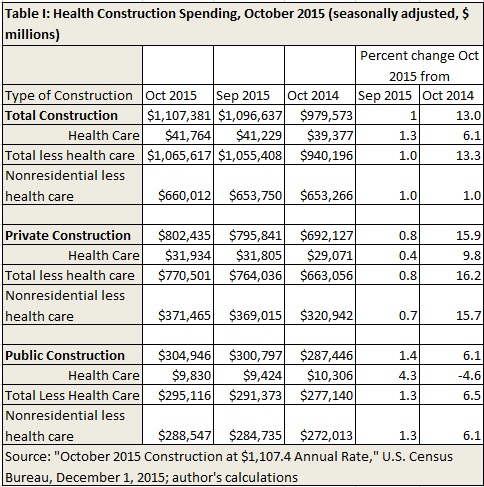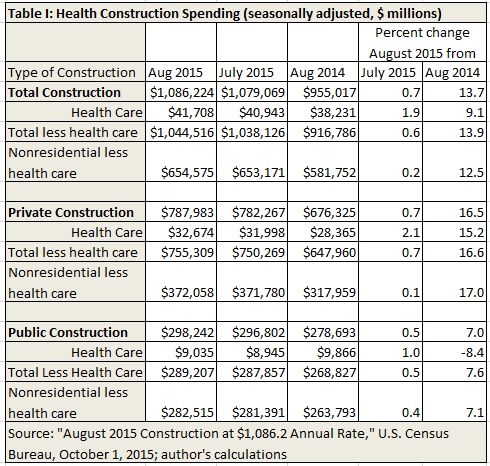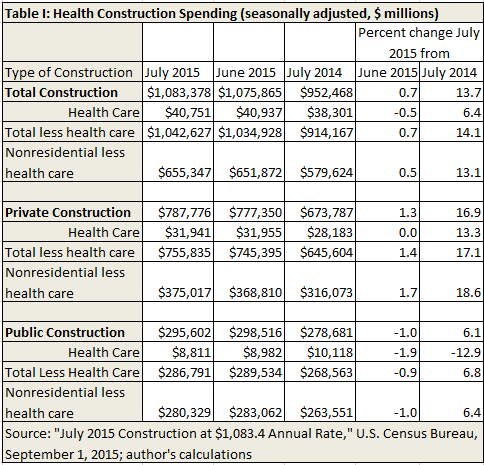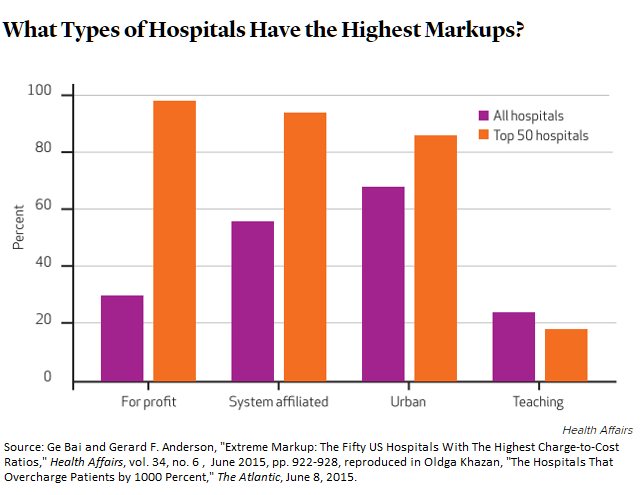In response to some comments about the role of health facilities construction in the economy, I’ve decided to add a few lines about today’s construction spending report from the U.S. Census Bureau.
Year on year, total construction spending increased by 4.8 percent through April, to just over one trillion dollars, of which about 40 billion dollars (four percent) was health facilities construction. Health construction spending grew only 2.6 percent, much less than all construction and the 9.2 percent growth in nonresidential non-health construction.
$725 billion of the total construction spending was private, of which a little less than half was residential and a little more than half nonresidential. Private health facilities construction accounted for $31 billion, an increase of 7.5 percent, versus 13.9 percent growth in private nonresidential non-health construction. (Private residential construction collapsed over the twelve months.)
$9 billion of government health construction spending comprised 3.24 percent of all government construction spending ($281 billion), and dropped by 11 percent over the twelve months.







